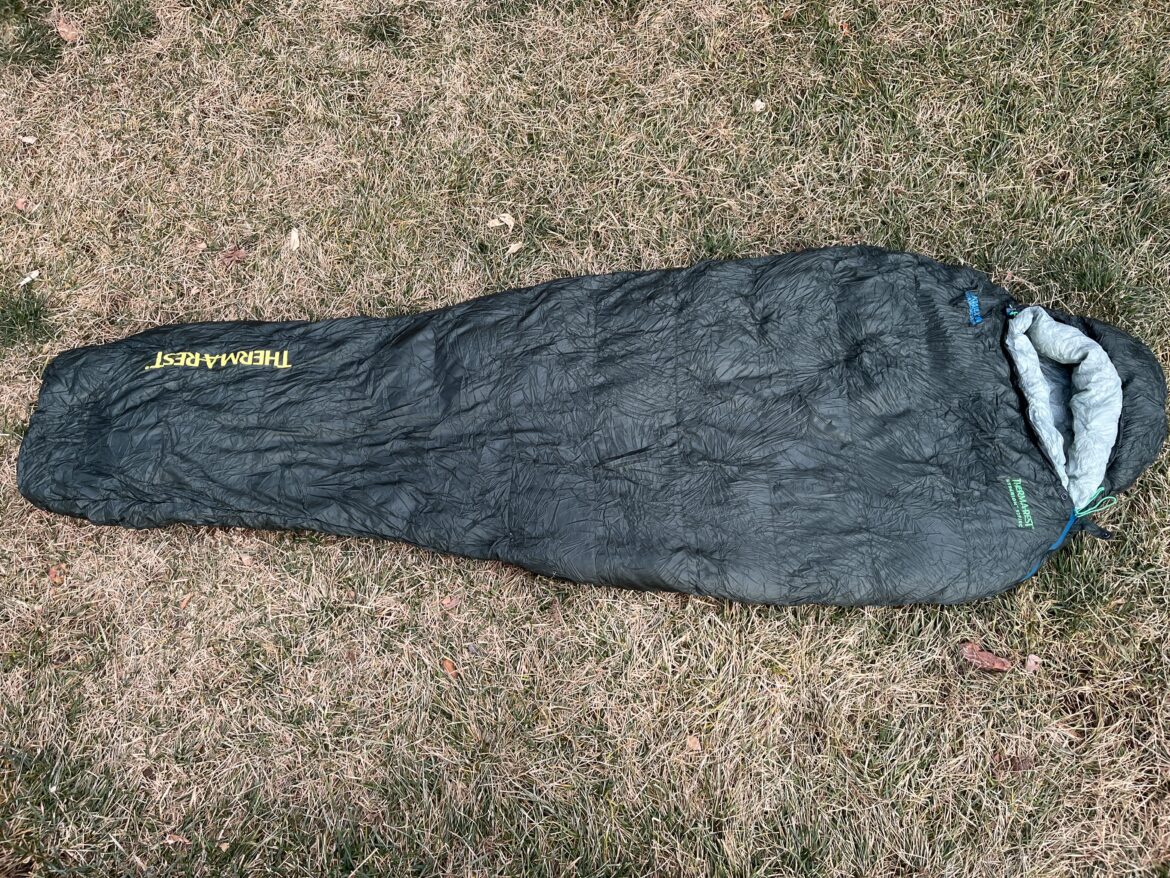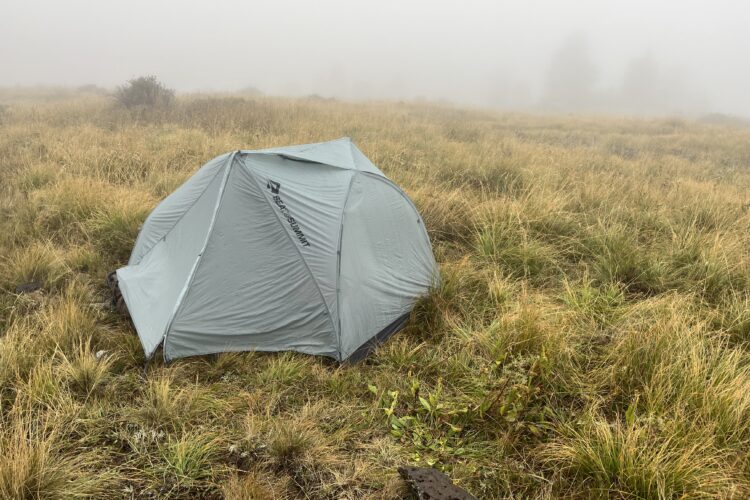
You’ll never truly realize how important a good sleeping system is until you spend eight hours overnight in a tent thinking about how cold your feet are or how badly you miss your mattress. If you’re backpacking and miles away from a car and miles more away from a hotel, these feelings only amplify.
Fortunately, it’s a great time to be an outdoorsperson and there is really no excuse to be miserable, especially with such highly evolved and available gear. This summer and fall I spent some time sleeping on the Term-a-Rest NeoAir XLite NXT sleeping pad and in the Hyperion 32° sleeping bag. Here’s what you need to know about this sleep gear.
Therm-a-Rest NeoAir XLite NXT specs

Therm-a-Rest NeoAir XLite NXT sleeping pad
The NeoAir XLite NXT sleeping pad is a premium sleeping pad for backcountry adventures, when weight and size matter a lot. This pad runs off of technology from a previous Therm-a-Rest pad, but the noise has been reduced by 83% according to the brand.
It’s roughly 3″ thick and has a horizontal baffled structure. The pad also uses a WingLock valve by Therm-a-Rest to make inflating and deflating quick and convenient.
The pad comes in four sizes: regular short, regular, regular wide, and large. My size regular pad weighed 14.5oz on my scale including its ripstop stuff sack. The pad is made from nylon and polyurethane.
The pads come in two colors and for some reason they are different shades of yellow: solar flare and lemon curry. Solar flare has a hint of orange and lemon curry is more of a school bus yellow.
- Price: $209 (size regular)
- Buy from REI

Therm-a-Rest Hyperion 32°F sleeping bag
The Hyperion is Therm-a-Rest’s sleeping bag for lightweight backcountry adventures, like bikepacking, but it’s also a cozy little home for car camping trips too. The bag uses a baffled construction to keep the down where it needs to be–which, speaking of, is a 900-fill Nikwax hydrophobic down, to keep sleepers warm if the down happens to get wet. Therm-a-Rest says this stays drier and maintains its loft 60 times better than an untreated down. This might also help explain the bag’s high price.
The Hyperion is made in an ergonomic shape with tapered legs and broad shoulders to fit people comfortably and maximize warmth, but it also uses zoned insulation, placing down where you need it most. This happens to be on the top and sides, says Therm-a-Rest.
The bag weighed 1.2lb on my scale. It comes in one color and three sizes: small, regular or long.
- Price: $489
- Buy from Moosejaw
On the trail

NeoAir XLite NXT sleeping pad
I had both the Hyperion bag and the NeoAir in a handful of conditions this fall, ranging from wet and muggy 40°F weather to dry, clear nights in the high 20s.
First, both are very light and packable which make them excellent choices for packing on a bike. After this, you just need to be mindful of room for a tent if you’re camping.
The NeoAir pad inflates as quickly as your lungs or the pump sack allow, but it wasn’t any more effort than other pads out there. I like to go pretty firm on my sleeping pads and it took less than five minutes to get the pad aired up. More importantly, the pad hasn’t seemed to lose air at all over the course of camp trips and stayed just as firm as it was on day one.

The Neo Air is relatively quiet as you toss and turn. It’s not dead silent as I’m sure no pads are, but it is impressive. There is somewhat of a crinkle to it, but it is soft and muted. The past few times I’ve camped, I paired this Neo Air with an older Therm-a-Rest foam roll-up pad and it’s been some of the most comfortable camping I’ve had in a while.
So far, the NeoAir XLite has stayed intact. It’s made from a ripstop nylon and seems just as durable as it does light. It comes with a field repair kit just in case a tough twig pokes through your tent liner.
Also, conveniently, the pad rolls up seamlessly and goes back in the stuff sack without having to push every little corner in with your fingers.

Hyperion 32° sleeping bag
It’s surprising how much warmth the Hyperion packs once you unravel it out of the stuff sack. That speaks to the packability and light weight of down and it does get more lofty when the bag has been out of the sack for a bit.
There is a guide on the inside of the bag and it’s a helpful range for choosing what kind of conditions you’re going to sleep in it. Though this is a 32° bag, Therm-a-Rest defines a comfortable level for sleeping at 41° and the lower limit is 32°, which feels appropriate.

I found the bag retained its warmth easily, especially if you go full mummy mode and zip the bag around your head. Once you get into the 30s, this bag does lose its capability, and it’s wise to bring some other layers if you want to stay comfortable. Or opt for the 20° Therm-a-Rest Hyperion bag, though it’s about $60 more expensive. The 20° bag says it is comfortable down to 32° however.
At that price and temperature range though, Sea to Summit makes a comparable bag and both of their 18° and 28° bags are more affordable and just as good and as light. At the time of writing though, it may just depend on where you find a deeper discount. Where the Hyperion did seem to have an edge was zipping the bag up from the inside. The long pull strings on both sides of the zipper are a breeze to seal.

I did have some instances of my bag getting wet due to a leak in the tent on a rainy evening. The wet spots didn’t seem to impact my warmth at all and my bag got much wetter than I would have liked.
Overall, the Hyperion has been a solid and lightweight sleeping bag, suitable for three-season adventures.
Bottom line
The Therm-a-Rest Hyperion 32° sleeping bag and NeoAir XLite NXT sleeping pad are light, warm, and comfortable for fast moving trips in the backcountry.




















0 Comments